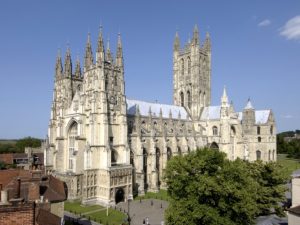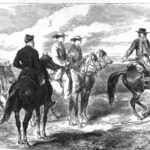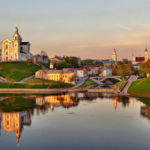Cathedrals of England
 From the VIII century in England there was a rich practice of creating works of Anglo-Saxon art, which absorbed the earlier traditions of the Celts, the predecessors of the Anglo-Saxons in this country, and the Romans. However, this practice was suddenly interrupted around the year 1000 due to the invasion of the Danes.
From the VIII century in England there was a rich practice of creating works of Anglo-Saxon art, which absorbed the earlier traditions of the Celts, the predecessors of the Anglo-Saxons in this country, and the Romans. However, this practice was suddenly interrupted around the year 1000 due to the invasion of the Danes.
And only when the Danish king Knud strengthened his position in England and adopted Christianity, was it possible to develop the creative activity of the new aristocracy, including in the field of church architecture.
New cultural changes came in connection with the Norman invasion of William the Conqueror in 1066. As a result, Romanesque sculpture in England developed under the influence of various influences, where local forms were combined with Scandinavian and continental styles, forming a completely new, Anglo-Norman artistic style. Moreover, the Romanesque style in England is often called Norman.
The capitals, which remained in the cloister of a Benedictine abbey, founded in 1121 in Reading – Berkshire to the west of London, are partially ornamented by interlaced bands with a drop-like pattern. Other capitals have a figured ornament, for example, a rather unclear image of an angel. Pa of one of the capitals depicts the scene of the coronation of Mary, presumably the oldest of the images of coronation that have survived to our time. Earlier capitals are located in the south transept of Worcester Cathedral and in Romsey Abbey and resemble the capitals of the crypt in Kenterbury Cathedral, created between 1100 and 1120 years. In all of them one can feel the connection with samples of Anglo-Saxon art – stucco work, metalwork and manuscripts with color illustrations, such as those that linger in the Canterbury scriptoria.
From the church utensils many fonts have come down to us, and although lead is sometimes found, they are mostly made of stone. Stone font from the Church of St. James – Ave Bury village, Wiltshire; in the south-east of England is decorated with flat terrain. A garland of woven blind arcades encircles the bottom of the bowl. This motif was widely distributed and often found in the architectural ornament of the Romanesque churches in England. Above the interlaced arcades are patterns of vines of different lengths. Here the Anglo-Saxon decor elements are clearly traced.
The two surviving reliefs in the Chichester Cathedral in Sussex may have at first been part of the choir’s fence ensemble. One shows the meeting of Christ, Mary and Martha at the gates of Nathania, on the other – the resurrection of Lazarus, who was friends with Christ. Both scenes are thematically related. Before Christ came to the village of Bethany before Jerusalem, he was sought by the sisters of Lazarus, first Martha, and then Mary; they told of the death of their brother. They told Christ that if he had been with Lazarus, their brother would not have died. Christ promised that he would return Lazarus to life, and Martha decided that he was talking about eternal life and about the salvation of Lazarus on the Day of Judgment, but this would not bring her consolation. Then the Bible follows the shortest and at the same time the most touching verse: “Christ has shed a tear.”
The scene in relief combines both events. Two women are kneeling before Christ, begging him to return to his brother a real, earthly life. The relief is damaged, the left hand and the right hand of the figure of Christ suffered the most. The damage looks so thoughtful that it seems as if someone deliberately damaged the relief, possibly to eliminate the moment of personal, friendly relations between Christ and Lazarus, as described by John. They are clearly felt in the relief of the resurrection, stylistically associated with the first. In both cases, the clear folds of clothes are underlined by deeply carved lines. The composition of scenes is identical, in the center is Christ, separating what is happening in front of him from the apostles behind him.
The choir of Chichester Cathedral, the construction of which began in 1091, was consecrated in 1108. Georg Zarneki believes that the altar barrier was created under Bishop Ralph de Luff, who died in 1123 and was probably German. This explains the stylistic similarity of the reliefs with the sculptural works of Hildesheim and Cologne. Both reliefs are dated approximately 1120-1125 years.
The tradition of Norman architectural ornamentation led to the emergence in England of the Romanik era of a number of unusually richly decorated portals. The portal of the southern narthex of St. Mary and St. Aldhelm in Malmesbury – Wiltshire between London and Bristol is not only the main sculptural work of the temple, but also the most outstanding and unusual example of such a portal in the world.
Narrow columns go directly to archivolts without breaking through capitals. Four arches, separated from each other by narrow ornamental stripes and surrounded by another strip from the outside, contain round and almond-shaped medallions with figures of biblical characters. On the side wall of the narthex are two lunettes, each of which shows six sitting apostles and an angel flying over their heads with a sculptural decoration in the form of a ribbon in their hands.



























